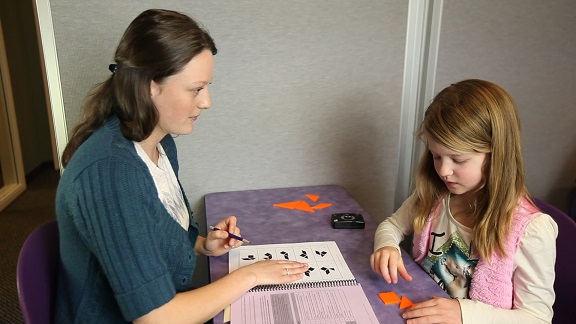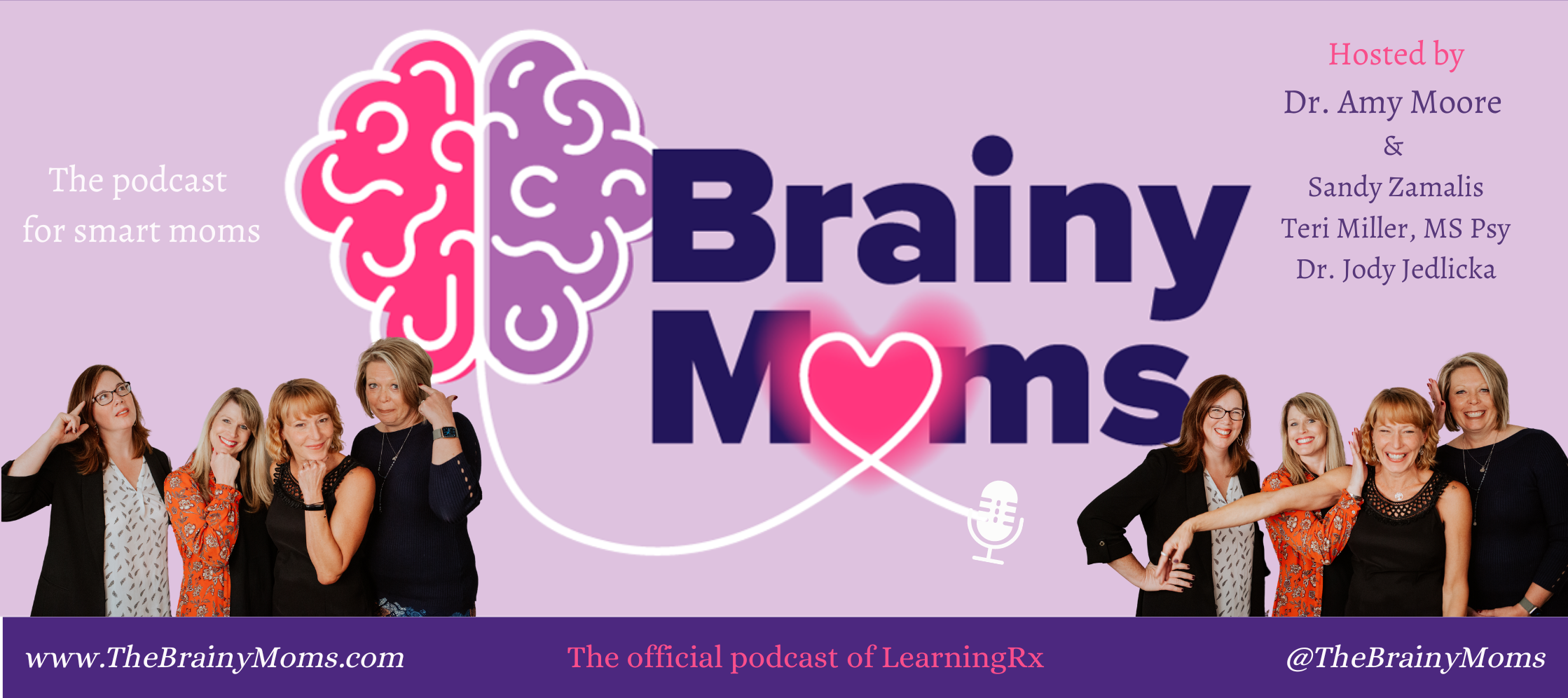The creators of every brain training program agree on one thing: that the brain is changeable. That’s the beauty of neuroplasticity—that the brain can change through exposure to certain experiences. It’s the nature of those experiences that differentiates the individual programs. As a cognitive psychologist and the research director for LearningRx, I am frequently asked how LearningRx is different from other brain training programs. I love this question because it’s so easy to answer! Although there are many differences, here are the top 5:
1. Human Delivery

LearningRx is delivered one-on-one, face-to-face across a table by a human cognitive trainer. Just like you can work out at the gym with a personal trainer, LearningRx pairs each student with their own personal brain trainer.
The human relationship in brain training enhances outcomes in several ways. It is a key piece of the puzzle that is absent in digital brain games and computer-based training programs. Let’s look at four big benefits of human delivery.
- Human delivery drives the development of self-efficacy, or one’s belief in his or her ability. A cognitive trainer can facilitate the development of self-efficacy for thinking and learning by modeling the tasks, providing mastery experiences over the tasks, giving verbal persuasion, and aiding the client in handling the physical response to stress.
- Human delivery enables dynamic feedback. Research has shown over and over again that feedback improves treatment outcomes and reduces attrition or dropout. It also promotes transfer to real-life change. By helping a client see how he can apply a new skill learned in the training environment to a task in the real world, transfer is more likely to occur. We haven’t yet met a computer that can give specific feedback like that.
- Human delivery enables adaptation of the program “on the fly”. A human trainer has the ability to modify the training tasks DURING the task. It’s important to push the client just beyond their ability level but be able to back off a little when the client becomes frustrated or agitated. If a task is too simple, it’s important to add complexity immediately to prevent boredom and to keep the client engaged. A human trainer can revisit tasks to drill down on specific weaknesses, change the rate of the completion, or alter the goals.
- Human delivery increased treatment compliance. The number one predictor of therapy dropout is the relationship with the therapist. Human relationships can be the difference between finishing the intervention or dropping out. And a human trainer ensures that the intervention is delivered with fidelity…the way it was intended.
2. Cognitive Complexity
LearningRx brain training is complex. Why is complexity important in a brain training program? Because cognition is complex! According to the ever-evolving Cattell-Horn-Carrol theory of cognition—the most widely accepted model of intelligence and the basis of most gold standard intelligence tests—there are 18 broad cognitive abilities and more than 91 narrow abilities. If cognition is that complex, shouldn’t a brain training program be complex as well? LearningRx targets the multiple skills that underlie the ability to think and learn. Skills like working memory, long-term memory, processing speed, visual processing, auditory processing, attention, and reasoning. Programs that are only training one skill like working memory or attention are missing an opportunity to develop the many cognitive skills we use in thinking and learning.
3. Task Intensity
LearningRx brain training is intense! There are over 200 training procedures with more than a thousand variations that are sequenced in order of difficulty and complexity. Almost every training task requires students to respond “on beat” to a ticking metronome. This adds an element of intensity to each task by promoting the development of automaticity and preventing mental breaks. Clinical neuroscientist Christina Ledbetter, PhD suggests that it’s this intensity that trainers create in every training session that drives neuroplasticity. A computer program or mobile brain game app can’t create this same level of intensity.
4. Optional Programs for Reading, Math, and Study Skills
At LearningRx, improving cognitive skills is the primary goal. But many students have difficulty with reading and math as well. Whether this is from poor instruction at school or because of weak cognitive skills is irrelevant. Strengthening basic reading and math skills such as phonemic awareness, phonological processing, and numerical fluency provides a critical foundation for reading and math success. LearningRx has reading, math, and study skills interventions delivered through the same brain training approach as the cognitive skill-building program. This is indeed a unique aspect of the organization that sets LearningRx apart from other brain training companies.
5. Validated by Peer-Reviewed Research on its Programs
Ever heard the phrase, “In God we trust, all others bring data”? LearningRx has the data to support its program. Since 2016, there have been many research studies on LearningRx programs conducted and published in peer-reviewed medical, psychology, and education journals. Peer-review is the process of having independent experts critically evaluate the research before it can be published in a scientific journal. The published studies report results on LearningRx brain training for children with learning struggles and ADHD, as well adults with brain injury and age-related cognitive decline. There are other brain training games, apps, and companies without this scientific validation. (That doesn’t mean they don’t help, it just means they don’t have the evidence to support their program or product yet.) To read all of the research published on LearningRx brain training, visit Gibson Institute of Cognitive Research—the nonprofit research division of LearningRx.
So, these were my top 5 favorite differences between LearningRx and other brain training programs. There are certainly more. Like the fact that the original LearningRx training programs were created more than 35 years ago and that more than 100,000 brains have been trained using this methodology. My own son’s brain was one of them! If you want to hear his story, you can watch my talk, Train Your Brain, Transform Your Tomorrow.
Have questions? Leave a comment or reach out to LearningRx directly.
From my brain to yours!
Dr. Amy
Amy Lawson Moore, PhD
Cognitive Psychologist
Note: This article was previously posted on ShesBrainy.com, Dr. Amy’s original blog site.
